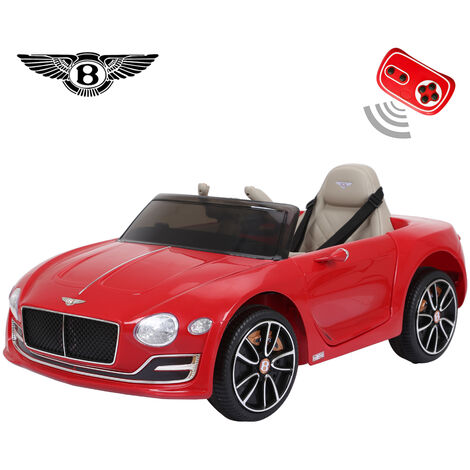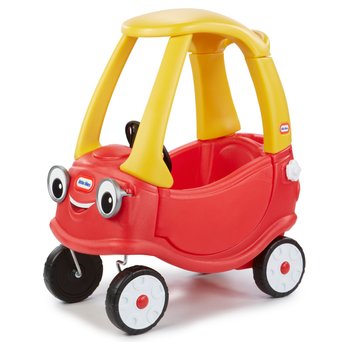Excellent Tips To Picking Electric Kids Cars
Wiki Article
What Security Features Of An On-Road Vehicle Should I Be Looking At? Pros And Cons
It is crucial to consider safety features when selecting a car ride for your kids. These will help to keep them safe and entertained when they play. Seat Belts are one of the most essential safety features that you should take into consideration.
Pros - Seat belts secure your child in the ride-on car, reducing the risk of falling out or getting thrown out during play. They provide an extra layer of safety, especially when making rapid turns or stopping abruptly.
Cons - Some rides-on-cars might not come with seat belts. This is especially true for those that are designed for children. In addition, kids may feel uncomfortable with seat belts or restrictive, leading to resistance or refusing to use them.
Sturdy Construction
Pros - A ride-on car made of sturdy and durable materials is more robust and resistant to damages that ensures long-term safety and dependability. It can stand up to all playtime rigors and still provide stability.
Cons – Durable construction comes at a high price, which can make it difficult for many families. Further, heavier materials could hinder mobility and maneuverability.
Low Center of Gravity
Pros - Cars with low centers of gravity are less likely to overturn and reduces the chance of injuries or accidents. They offer greater stability and control during turns and maneuvers.
Pros - Some ride-on vehicles with a lower center gravity sacrifice ground clearance and off-road abilities that can limit their capabilities.
Child Remote Control -
Pros: Parents can monitor their children's play activities and provide assistance, while ensuring security and control. Parents can intervene in emergencies or navigate difficult terrains or avoid collisions.
Cons - Remote control by parents may hinder the autonomy and independence of children as they are dependent on parental assistance and guidance during play. Furthermore, models that can be controlled remotely can be more expensive than models that have manual controls.
Speed Limiters
Pros - Ride-on vehicles with speed limiters or variable speed settings let parents control the maximum speed of the car, reducing the risk of accidents or collisions. They are able to increase the maximum speed when their child's confidence grows.
Cons – Some children will surpass lower speeds that can result in frustration and discontent. Also, speed limiters might not be accessible in all models or require additional features or other accessories.
Safe Start Technology -
Pros - Safe Start technology makes sure that the ride-on vehicle is able to stop and start up without a hitch, eliminating the danger of sudden lurches or jerks that could startle or destabilize the child. It makes riding more comfortable and safe.
Cons - Models that include the safe start feature may be more expensive than models that do not. Moreover, some children might feel that slow acceleration and deceleration are less fun or exciting than instant starting and stopping.
Visibility Enhancements
Pros - Ride-on vehicles that have visibility enhancements, like working taillights, headlights, or reflective material improve visibility, especially in low-light conditions or dimly lit areas. They increase safety by increasing the visibility of cars towards pedestrians and other vehicles.
Cons - The enhancements to visibility can make the battery more drained or make it more difficult to design the ride-on cars, increasing the likelihood of malfunctions as well as maintenance problems.
When you consider these safety features and considering their pros and cons, you can select a ride-on car that prioritizes your child's safety while providing the most enjoyable and enjoyable playing experience. Read the best remote control childrens cars for site recommendations including remote control childrens car, toy and car, electric two seater cars, remote control childrens electric cars, toy car for car, a toy car, kiddies cars, two seater electric cars, a toy car, childrens ride on and more. .

What Type Of Assembly And Upkeep Requirements Are There For Children's Ride On Cars?
It is common for kids ride-on vehicles to require assembly along with regular maintenance to maximize performance and safety. These are some of the most commonly used assembly and care requirements for children's ride-on car.
The majority of ride-on cars are assembled, and may require assembly. This usually involves attaching parts like the steering wheel and seats according to the instructions of the manufacturer.
Follow the assembly instructions carefully, making sure all parts are securely connected and properly aligned. In accordance with the directions to complete the assembly, use the provided hardware and tools.
Cleaning
It is important to clean the ride-on vehicle frequently to ensure its appearance and performance. Use a soft, spongy cloth or sponge soaked in moderate soap and water to wipe down the exterior surfaces, getting rid of dust, dirt and dust.
Be aware of areas that are prone to build up such as tires, wheels and undercarriage. Use a brush and toothbrush to clean those difficult-to-access areas.
Do not use harsh chemicals or abrasive detergents. They can damage electronic components as well as the paint of the ride-on car.
Battery Care -
Battery care is crucial for any ride-on powered by rechargeable batteries. A proper battery maintenance program will maintain performance, and increase battery life. Battery care is easy by following these tips.
Fully charge the battery prior to the first time use and again after each use to ensure maximum runtime.
The battery is not fully charged and leaving it connected for long periods can cause damage and shorten its life.
The ride-on car should be stored along with the battery in a cool, dry place when not in use, away from direct sunlight or extreme temperatures.
Examine the battery terminals regularly to see if they are damaged or corroded. Clean them as necessary with an electric wirebrush or terminal cleaner.
Replace it if it is not able to hold an adequate charge or shows signs of deterioration or damage.
Tire Maintenance -
Always check your tires for signs that they're losing pressure, damaged, or damaged or worn. Utilize a bicycle compressor, or an air compressor to fill the tire to the recommended pressure.
Examine the tread pattern on your tires for obstructions and foreign matter that can cause flats or punctures. Take out any obstructions, and repair or replace damaged tires as necessary.
Lubricate your axles and wheel-bearings to ensure smooth movement.
Sometimes, repairs or replacements are needed.
Even with routine maintenance, it's still possible that ride-on vehicles will need to be repaired or parts replaced because of wear and tear or accidents.
Pay attention to indicators of malfunction and degradation such as abnormal sounds, power loss or unusual behavior. For help with troubleshooting or repairs, consult the manufacturer's instructions.
Replace damaged or worn-out components as soon as possible to prevent further damage and ensure safety and the functionality of the vehicle that rides on.
If you follow these guidelines for maintenance and assembly You can ensure that your child's ride-on vehicle in great condition and enjoy hours of safe and enjoyable playtime for your child. Read the most popular discover more on kids ride on cars for more advice including toy with car, toy cars toy car, digger ride, ride electric car, kids electric cars, cars pedal car, pedal car, toy car for car, kids electric cars, race car toy and more. .

What Are The Remote Control Childrens Cars Available? What Are The Advantages And Disadvantages Of These Cars?
The various sizes, styles of prices, sizes, and styles of remote control children's car are readily available to meet the requirements and budgets of all. Here's a rundown of the pros and pros, and dimensions of remote-controlled children's cars.
Electric RC Cars – Batterie-powered remote-controlled vehicles that can be used both for indoors and outdoors. They are available in many designs, such as buggies, trucks, and sports cars.
Nitro RC Cars - Gas-powered remote-controlled cars that have more speed and performance, but require more care and experience to run. Electric RC cars are less bulky and are less costly.
Scale Models are remote controlled replicas which include vehicles, trucks and planes. Scale Models can be found in a range of sizes ranging from 1-10 up to 1-24. The larger scales offer more detail and realistic appearance.
Sizes -
Remote control kids' cars are available in different sizes. From micro-sized to full-scale replicas, they come in a variety of dimensions and shapes. The size of the vehicle has an impact on the performance, speed and handling characteristics.
Micro-sized vehicles are small and light, and therefore ideal for indoor play and use by young children. Larger models provide greater power and durability which makes them suitable for off-road and outdoor driving.
Prices
The prices of remote control cars for children differ based on factors like dimensions, features, brands, and build quality.
Micro-sized electric and nitro powered RRC cars are available in sizes that range from $20 up to $100.
The cost of scale models and hobby-grade RC vehicles can vary from several hundred dollars up to more than 1000 dollars, based on the level of performance and precision.
The pros and cons of -
Pros -
Remote Control Children's Cars - These cars are great for entertainment. They can be used by adults and children alike.
Skills Development - Operating an RC car helps children develop hand-eye coordination, spatial awareness and problem-solving capabilities.
Social Interaction. RC cars encourage social interaction, and can be enjoyed by friends and relatives.
Customization - Many RC vehicles can be upgraded by adding upgrades and accessories, which will improve their performance as well as appearance.
Cons
Costs - A premium model with advanced features can be expensive, especially hobby-grade models.
Children might find it difficult to operate RC cars initially.
Maintenance - Cars with RC engines require regular maintenance, which includes cleaning, lubrication, and occasional repairs or replacements of parts.
Safety issues Safety Issues RC vehicles could be hazardous if they are not operated safely under the supervision of an adult. They may result in accidents, falls and electrical hazards.
Remote control cars for children can be a fantastic educational and fun experience. However, it's essential to pick the correct model based on factors like size, safety, price and features. For older kids, hobby grade RC cars could be a better option. However, more basic models could be a good option for children who are younger. See the top ride on toys kidscars.co.uk info for site advice including electric car ride, ride ons, ride ons, toy car for car, remote control childrens electric cars, electric ride on, electric car ride, electric ride on, ride on toy, toy cars toy car and more. .
